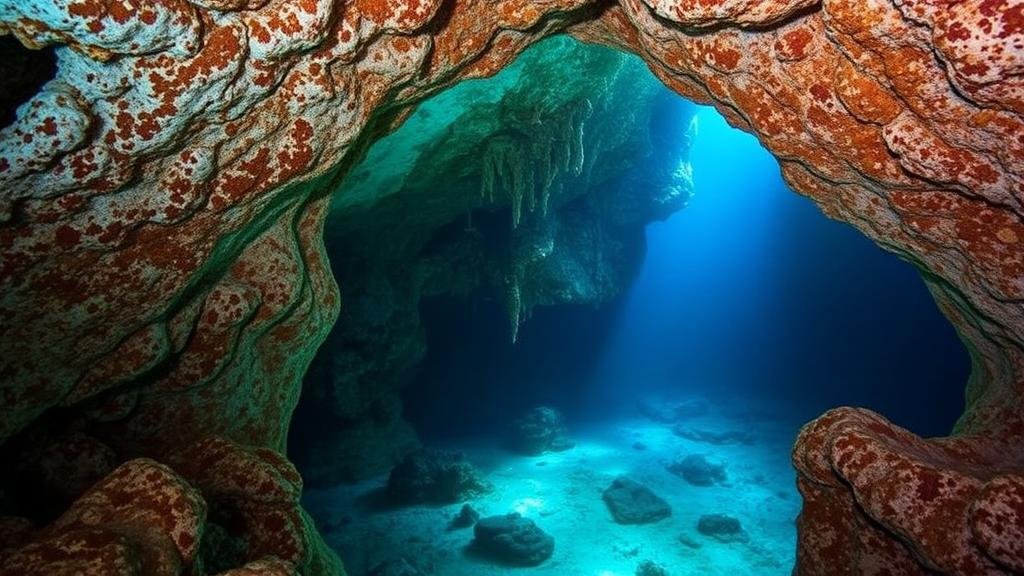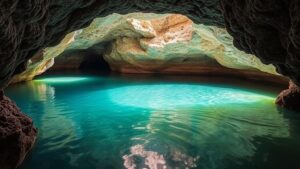Exploring the vibrant underwater caves of the Yucatán Peninsula.
Exploring the Vibrant Underwater Caves of the Yucatán Peninsula
The Yucatán Peninsula, located in Mexico, is renowned for its stunning natural beauty, rich cultural history, and unique geological formations. Among its most breathtaking features are the intricate underwater caves, known as cenotes, which offer thrilling exploration opportunities for divers and adventure seekers alike. This article delves into the captivating world of these underwater caves, providing insights into their formation, cultural significance, and the best spots for exploration.
The Formation of Cenotes
Cenotes are natural sinkholes formed when the limestone bedrock collapses, exposing the groundwater beneath. This geological process is attributed to the regions karst topography. Statistical data indicates that the Yucatán Peninsula has around 6,000 cenotes, with an estimated 2,500 of them suitable for swimming and diving.
The formation of cenotes began over millions of years, shaped by erosion and the dissolution of limestone by acidic rainwater. As the outer layers eroded, vast underground rivers were created, allowing for the fascinating aquatic ecosystems we see today. cenotes act as windows into this subterranean world, offering insights into both geology and ecology.
Cultural Significance of Cenotes
Cenotes have played a crucial role in the culture and history of the Yucatán Peninsula. The ancient Maya regarded these natural formations as sacred and believed they were portals to the underworld. They utilized cenotes for water supply and as sites for religious ceremonies. Notably, the cenote at Chichén Itzá was a focal point for sacrificial offerings. Recent archaeological discoveries indicate that human remains and artifacts found in these cenotes date back as far as 1,000 BCE.
Top Underwater Caves to Explore
- Gran Cenote: Located near Tulum, Gran Cenote is one of the most accessible and popular spots for snorkeling and diving. Its crystal-clear waters reveal stunning rock formations and diverse aquatic life.
- Dos Ojos: With over 61 kilometers of underwater caves, Dos Ojos is renowned for its impressive visibility and breathtaking stalactites. This site is ideal for experienced divers looking for a deeper exploration.
- Ik Kil: Close to Chichén Itzá, Ik Kil is a beautifully landscaped cenote often paired with cultural tours. Its depth and spectacular waterfall make it a fantastic swimming spot.
- Casa Cenote: Just north of Tulum, Casa Cenote extends into mangrove forests, offering unique dives that showcase both freshwater and saline ecosystems.
Ecological Diversity
The underwater caves of the Yucatán Peninsula are home to a diverse range of flora and fauna, some of which are endemic to the region. The cenotes provide a habitat for species such as the Mexican blind cavefish and various aquatic plants. Exploring these ecosystems not only offers a glimpse into breathtaking underwater life but also raises awareness of the need for conservation efforts.
Considerations for Exploration
For those eager to explore the underwater caves, several considerations are essential:
- Safety: Diving in cenotes requires proper training and equipment. Engaging with certified diving instructors and following safety protocols ensures a safer experience.
- Environmental Awareness: Visitors should practice eco-friendly tourism, emphasizing the preservation of these natural habitats. This includes avoiding disturbing wildlife and minimizing waste.
- Respect for Cultural Heritage: Recognize the significance of cenotes in Maya culture. Avoiding artifacts or historical sites is vital in preserving their integrity for future generations.
Real-World Applications
The exploration of the Yucatán Peninsulas underwater caves has garnered international attention. Scuba diving tourism contributes significantly to the local economy, providing jobs and awareness for environmental conservation. Local agencies now advocate for sustainable practices, ensuring that these natural wonders remain intact for future generations.
Actionable Takeaways
The vibrant underwater caves of the Yucatán Peninsula are not just destinations for adventure but also treasures that reveal the regions geological history and cultural heritage. Whether you are a seasoned diver or a curious traveler, these cenotes offer captivating experiences:
- Plan your visit during the dry season (November to April) for optimal diving conditions.
- Engage with local guides to enhance your understanding of the ecological and cultural significance of cenotes.
- Always adhere to safety regulations and environmental conservation practices.
By exploring the cenotes, you contribute to the preservation of these unique ecosystems while experiencing the awe of one of natures most beautiful creations.



